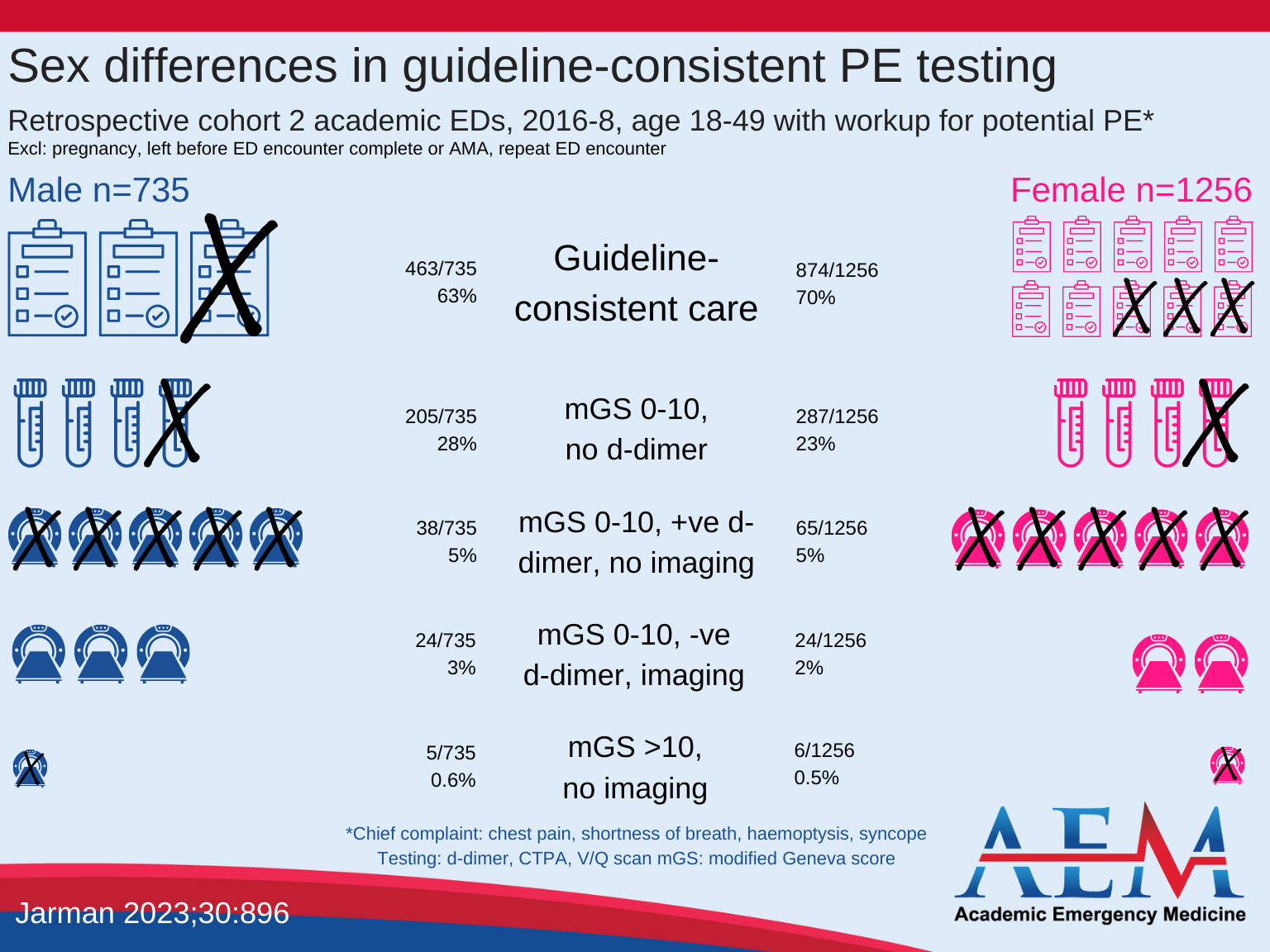September 2023 Pick of the Month
Home
/
Publications
/
Academic Emergency Medicine
/
Editor-in-Chief Pick
/
September 2023 Pick of the Month
Gender-influenced Hypothesis Generation
People dedicated to studying pulmonary embolism (PE) in emergency care are likely aware that emergency clinicians in the U.S. tend to test young women for PE more often than they test young men. However, not everyone is aware of this fact. Accordingly, in this month’s POTM, Sex differences in guideline-consistent diagnostic testing for acute pulmonary embolism among adult emergency department patients aged 18–49, Jarmen et al. reveal that, in comparison to male patients, women were tested at an almost 2:1 ratio. This finding aligns with previous research on the topic.But, why this disparity? From an epidemiological perspective, both men and women have the same lifetime frequency of PE. Women tested for PE also have the same pretest probability estimates as men (see Table 4). Sure, some young women take birth control pills, but this does not come close to explaining the imbalance in testing rates. Moreover, Jarman and colleagues found that female patients were slightly more likely to receive guideline-consistent care. This suggests, thankfully, that clinicians were not routinely skipping the D-dimer in women once they decided to test.
So, back to the question of why? From where does this gender-based difference in testing rates originate? Do clinicians mistakenly believe that women, due to higher endogenous estrogen levels, are at a greater risk of PE? Is this 2:1 ratio a reflection of the fact that most ED clinicians are male, and somehow that biases their receipt and cognitive processing of clinical information from female patients, subsequently leading to the workup for PE (see the last row of Table 3)? These conjectures clearly represent pure speculation. But because no research study has revealed a valid psychological or behavioral rationale for gender-based diagnostic testing for PE, speculation is all we have
Jeffrey A. Kline, MD
Editor-in-Chief

Source: Kirsty Challen, BSc, MBChB, MRes, PhD, Lancashire Teaching Hospitals | AEM Editor of Infographics
